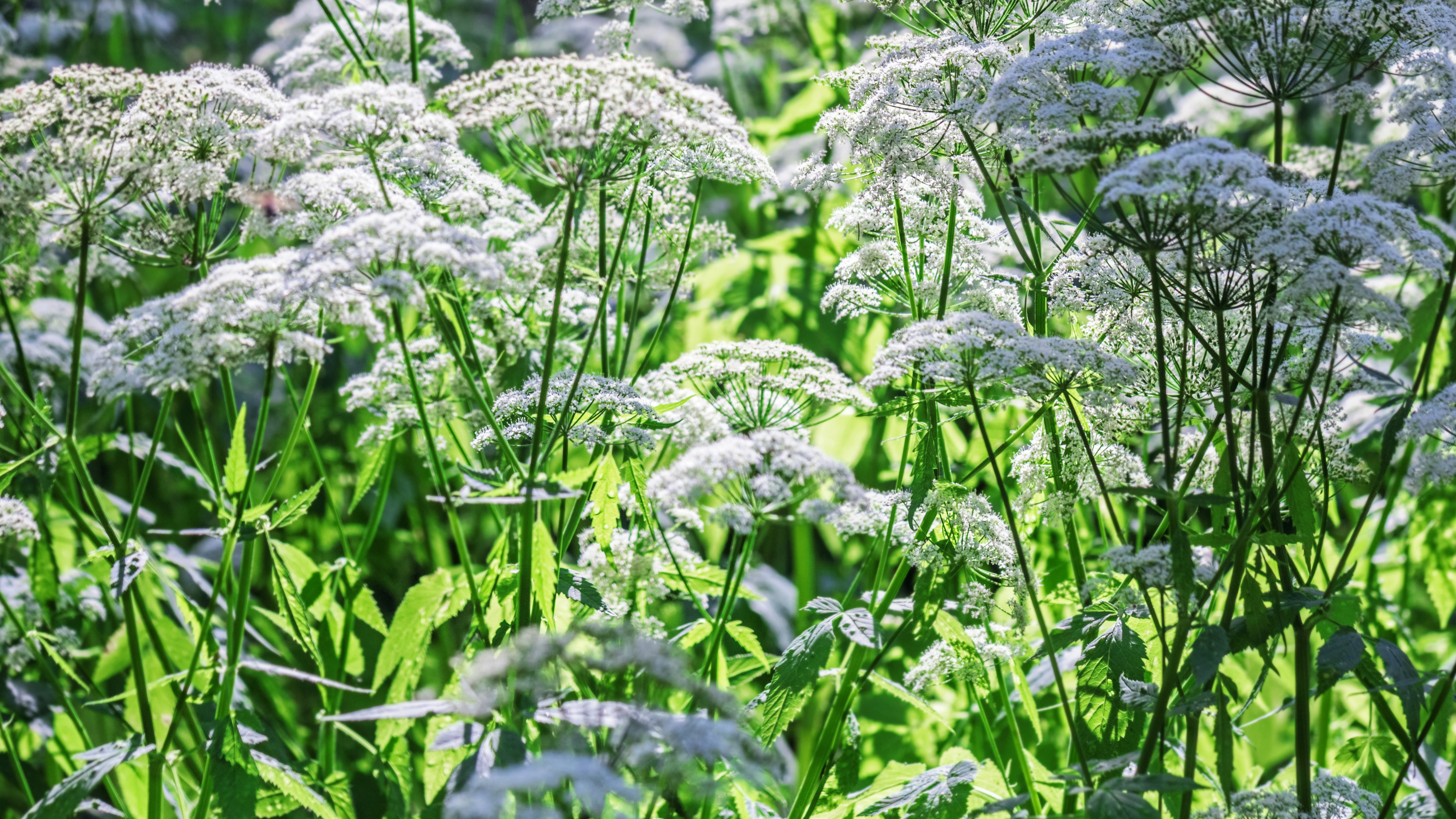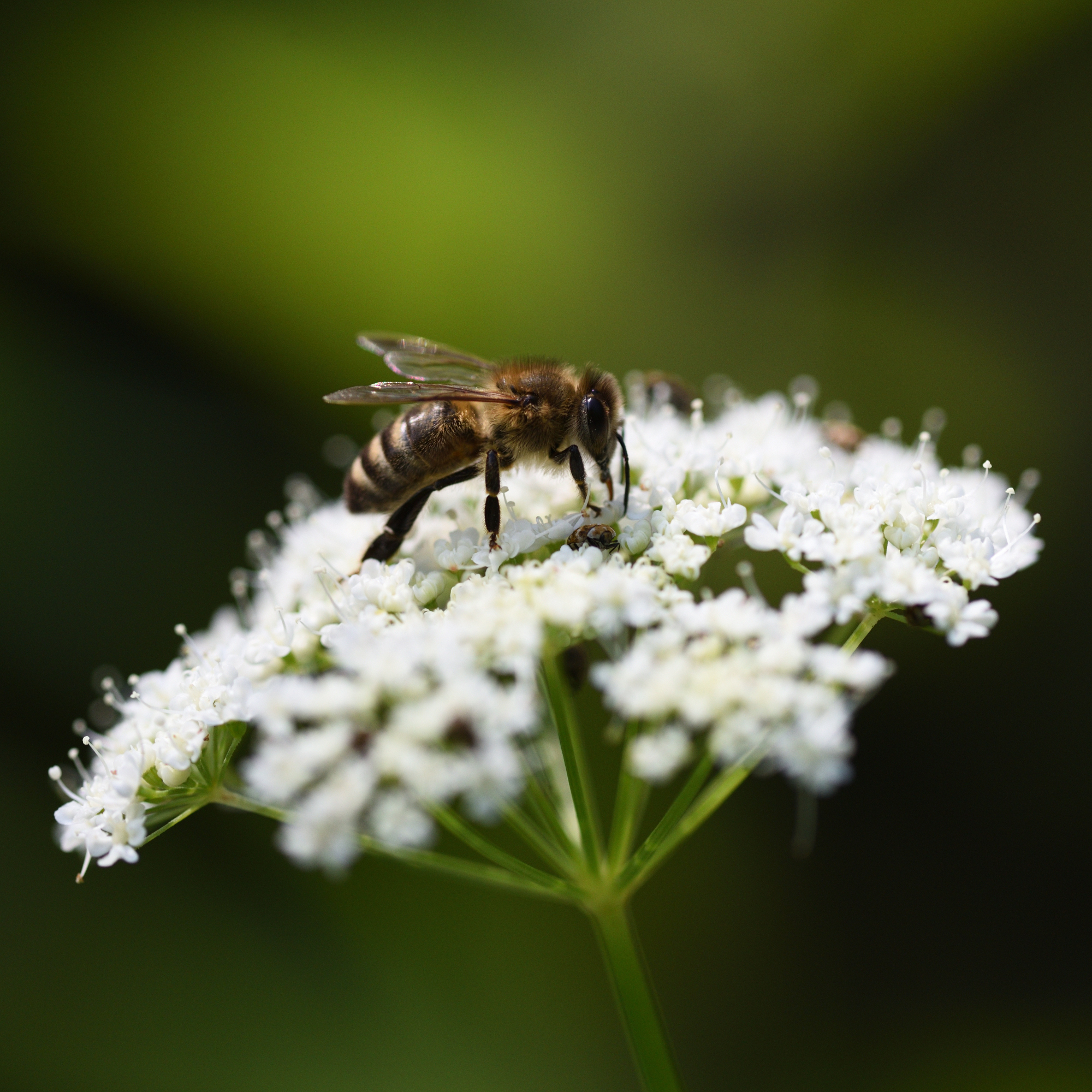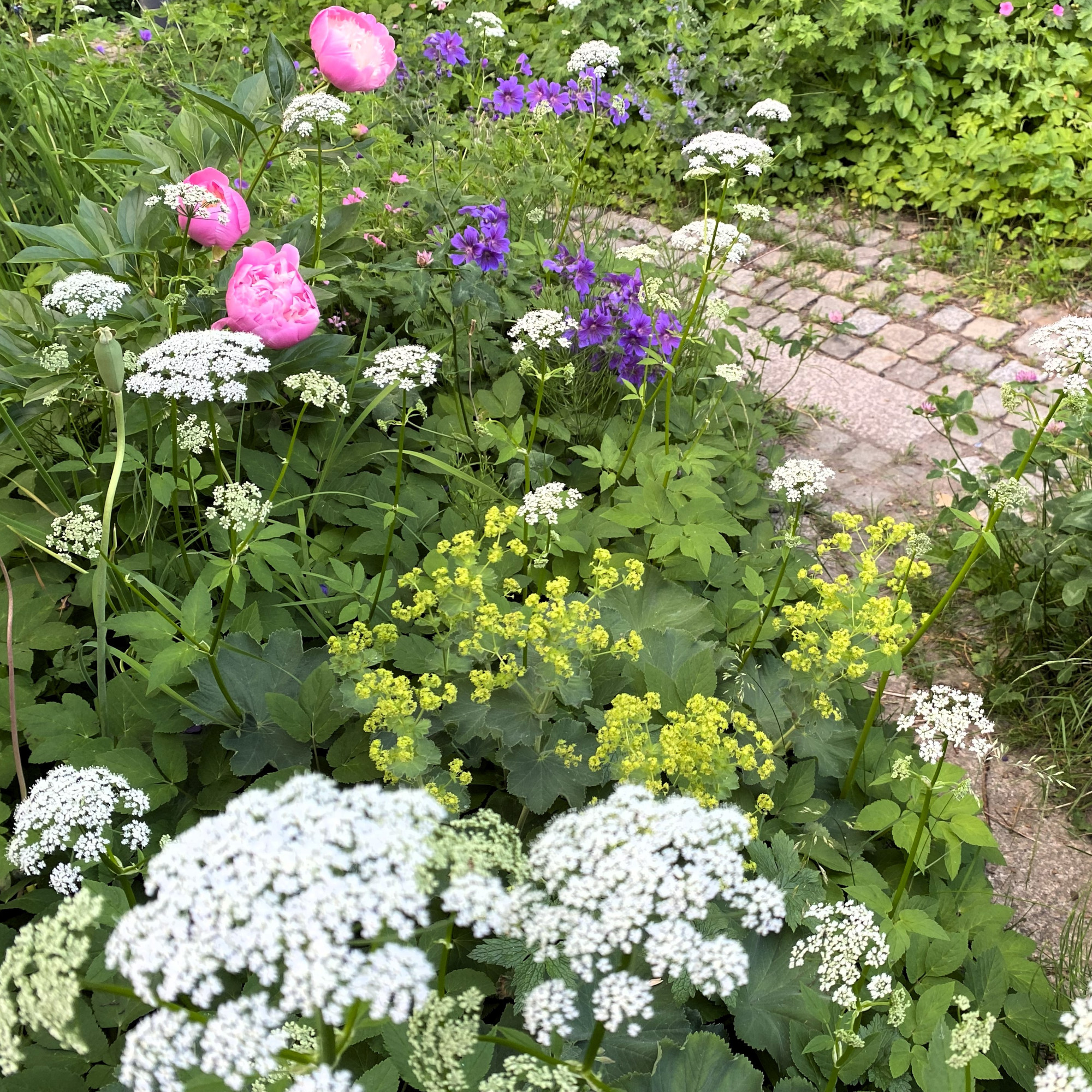Should you get rid of ground elder? What the RHS's chief horticulturalist says about keeping or removing this weed in your garden
To weed, or not to weed? We got the advice from experts

As we enter this glorious time of year, our plants are in full bloom, and there is life in the garden everywhere you look. Unfortunately, this also extends to garden weeds, with those pesky little ‘bonus plants’ putting on growth faster than we can keep up with them.
But do we need to get rid of every last one? Ground elder often strikes fear into the heart of gardeners, novice and experienced alike. This common invasive weed (known by many different names, including bishop’s weed, gout weed and gout wort) spreads like wildfire, resulting in a fair amount of ground covering in seemingly no time at all. This is thanks to its growing habit.
It can continue to grow and spread if even a small piece of rhizome (root) is left in the ground, sending up new shoots, followed by bright green leaves and then white flowers. It can easily overwhelm plants you have growing, smothering them above ground, and strangling them with its roots below.
This plant isn’t the same as a similarly named one. However, as gardening journalist Kim Stoddart tells us, 'Ground elder is not to be confused with elder, the tree which produces fine sprays of flower heads and berries which can be used to make all manner of exciting cordials, wines and preserves.'


Kim Stoddart is a multi-award-winning journalist, editor of Amateur Gardening magazine, and a leading authority on resilient methods of gardening. Her latest book is the popular The Climate Change Resilient Vegetable Garden.
Should you get rid of ground elder?
The question of whether you should get rid of ground elder or not is a complicated one.
RHS chief horticulturalist, Guy Barter, explains, 'Ground elder can damage plantings, so on the whole it is best to confine it to where it can do little damage – you often find it at the bottom of hedges, under shrubs or in less-used garden areas. It can be left in these places where it can support many insect species, including beetles, moths and occasionally certain butterflies. In fact, embedded in these areas, it is hard to get at even if removal was desired.'

If you choose not to get rid of ground elder, what is it good for? Kim uncovers some uses. 'Ground elder is a lovely ground cover plant, which also has edible leaves, which are very good for you, by all accounts.
Sign up to our newsletter for style inspiration, real homes, project and garden advice and shopping know-how
However, this plant needs to know its place, or else it will take over and cause long-term headaches. Therefore, work with it in wilder areas of the garden where ground cover is welcome, and enjoy foraging some of its leaves for use in the kitchen in a stress-free way.'
This means it is really up to you and how you use your garden space as to whether you need to totally eradicate ground elder or not. Those with smaller areas might not have the space to give over to it, but if you have any awkward or unused spots, it can be a welcome addition for beneficial garden visitors in a wildlife garden, and your harvest basket! (As with any plants you are foraging, always make sure you have identified it correctly and are absolutely sure what you are picking before you eat it.)

Guy Barter is the chief horticulturalist at the Royal Horticultural Society (RHS), the UK’s leading gardening charity. Find out more about the RHS.
How to get rid of ground elder, naturally
At a time when we are all increasingly aware that insects need our help more than ever, removing even pesky unwanted plants that might be beneficial to them doesn’t always feel right. However, to avoid ground elder getting a stranglehold over your whole garden, are there any natural ways you can get rid of it, without impacting biodiversity?
Guy shares his advice: 'Ground elder can simply be dug out, removing all roots. Some fragments may well survive, so a second go later is usually needed to eliminate the hold-outs. This can be tricky if the ground elder is embedded in a rockery, a herbaceous border or other hard to access site and the whole lot may have lifted/dismantled to remove the ground elder, holding desirable plants in pots to replant later when they, and the plot, are free of any ground elder.'

'Alternatively, the area can be covered in black plastic (ideally reused) all summer to starve the ground elder out. As an alternative to black plastic, infested areas can be covered in several thicknesses of cardboard, 150mm of well-rotted compost applied on top, then plantings or sowings can be made into the compost. The ground elder will be suffocated, and the plants will root through the rotting cardboard into the soil below. This is expensive if compost has to be bought, but the soil will be greatly improved in the long run.'
'Another dodge for sunny spots is to sow a lawn with strong utility grass seed on the ground elder-infested area, followed by an application of organic lawn fertiliser associated with keeping the sward healthy and walkable (like Viano Recovery Organic Lawn Fertiliser 10kg from Thompson & Morgan.) This will ultimately beat down, weaken and eliminate the ground elder.'
'The best way to control ground elder, though, is not to accidentally bring any in – so inspect new plants and any imported topsoil, rejecting any suspect matter.'
What you’ll need
- A digging fork: This Spear & Jackson Traditional Stainless Steel Digging Fork from Amazon is a nifty bit of kit to have on hand.
- A good pair of gardening gloves: These are Sarah Raven's Favourite Gloves
- A quality lawn fertiliser: This Viano Recovery Organic Lawn Fertiliser 10kg from Thompson & Morgan is a great product.

Step-by-step
If you are going to dig out ground elder in your garden, here is what you need to remember:
1. Dig up the roots
Use a garden fork (the Spear & Jackson Traditional Stainless Steel Digging Fork from Amazon is my favourite to dig carefully around the plant.
Patience will help here, as the roots are liable to snap, so slow and steady wins the race, following the roots gently to get out the maximum amount you can.
2. Remove the root system
Aim to remove as much of the root system as you can, as ground elder can grow back from even the smallest piece left behind.
3. Sieve the soil
An extra step can be to sieve the soil, helping you to identify and remove any small pieces of root, but obviously, whether this is viable or not will depend on the size of the space you are digging over.
4. Cover up the area
If you won’t be planting the area straight away, using a covering of black plastic or cardboard can help to keep the space clear.
5. Prevent it from returning
Keep an eye on your soil, and regularly hoe off any emerging shoots, which will help keep on top of infestations before they can take hold.
As with many perennial garden weeds, ground elder can be a tricky one to master, but with these simple measures, you should be able to keep your garden clear in spaces it would be competing with other plants, and you can offer nature that little helping hand by leaving spaces you aren’t worried about.
Laura Hillier is an editor and content writer with more than 10 years of experience in horticulture and women's lifestyle journalism. Passionate about sustainability and the wellbeing benefits of being in the outside world, Laura is keen to inspire everyone to grab a little slice of the good life.
You must confirm your public display name before commenting
Please logout and then login again, you will then be prompted to enter your display name.